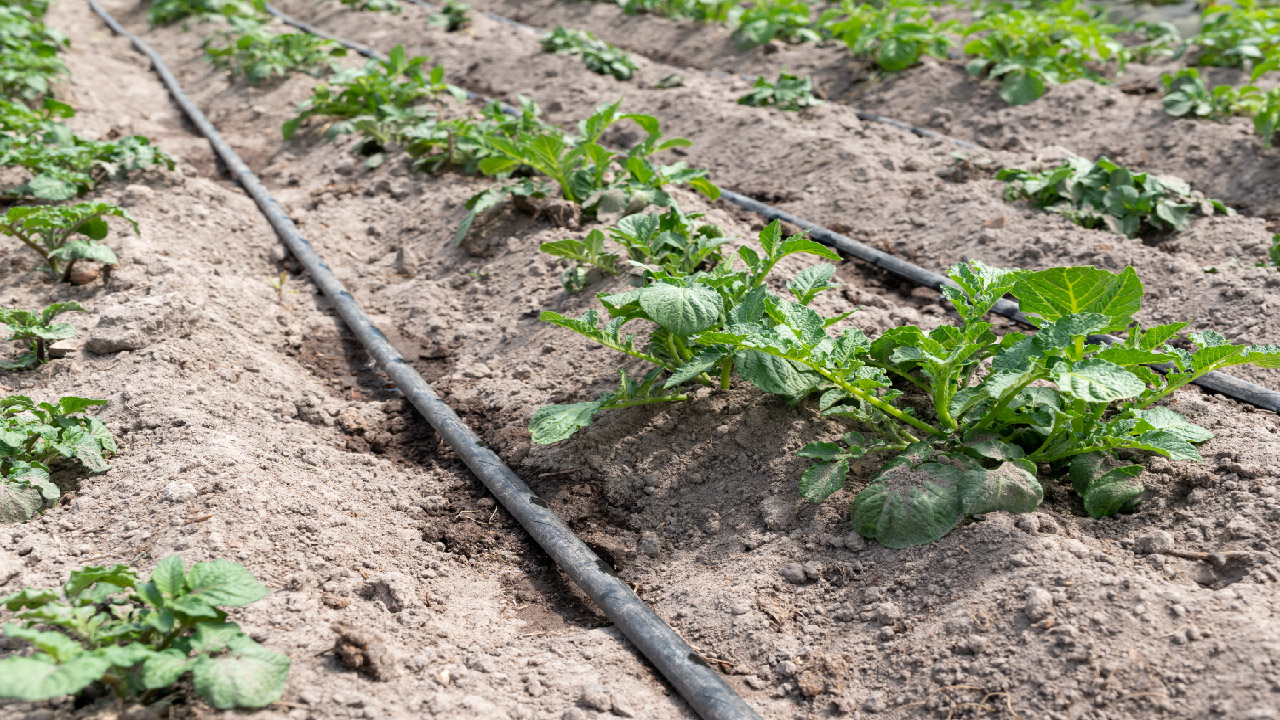
Drip Irrigation Vs. Traditional Watering Methods: Which One Should You Choose?
Whether you’re an experienced farmer or a beginner interested in farming or landscaping, you are sure that healthy plants require sunlight, air, and water. Although crops obtain sunlight and air naturally, irrigation is necessary to fulfill the plants’ water needs.
Gardeners are stuck between two options; drip irrigation and traditional watering. Drip irrigation is a targeted approach that delivers water directly to the plants’ roots. Traditional methods like overhead, furrow, and sprinklers take broad coverage and simplicity but come with higher water wastage.
Are you stuck on the right system to choose to keep your crops watered? Read on to find out!
Drip Irrigation: Definition + Working Mechanism
Drip irrigation is a highly effective method that delivers water using tubes, emitters, and fittings. They are designed to water precisely at the plant’s roots, maximizing water absorption and minimizing waste.
In drip irrigation, a tube system with emitters is installed on the ground to release water at the root zones. It’s a simple way to maintain optimal moisture levels in the soil.
Benefits of Drip Irrigation
Are you looking for an option that reduces wastage and maximizes absorption? Drip irrigation will help reduce water consumption by up to 60%. The system targets the roots so there are minimal chances of evaporation and runoff.
The slow-release mechanism helps in ensuring water is absorbed more effectively even in soils with low water retention.
Well, there are more benefits.
Lower humidity levels. Unlike sprinklers that spray water everywhere, drip irrigation keeps the water at the soil level. This helps maintain humidity at a low level and reduces the risk of fungal diseases like blight and leaf fungus.
Reduce water costs and wastage. Compared to overhead methods, drip systems operate at low pressures. The low pressure helps to lower energy costs making them an excellent option for large-scale farms.
Maintains soil health. Drip irrigation promotes healthier and deeper root growth as moisture levels in the soil are kept at the required levels.
Understanding Traditional Watering Methods
These methods have been used for a long time to maintain green gardens. Traditional methods focus on keeping the ground saturated either through direct application or flooding.
While not recommended fully, they can still be used in orchards, farms, and fields with abundant water resources. Sprinklers, for instance, are ideal for lawns, parks, golf courses, and fields. Flood irrigation methods can be used in bananas, fruit trees, vegetables, and corn fields.
Remember the evaporation and distribution to non-target areas are relatively high.
Traditional Watering Methods: The Advantages
While traditional methods don’t have the same water conservation ratio as drips, they still have benefits. But, what are they?
Simple operations. Traditional methods are easy to use and are friendly to beginners and small-scale farmers.
Broad coverage, especially in huge gardens, lawns, and golf courses. They are simple to install and cost-effective.
Hands-On experience. Traditional methods allow gardeners to reconnect with their plants.
Drip Irrigation Vs. Traditional Watering Methods
1. Water Usage & Wastage
In terms of water consumption, the efficiency of drip systems is around 90% while that of traditional methods like sprinklers lies at 60% to 75%.
As we highlighted earlier, trip irrigation is targeted to conserve water and provide more volume for optimal plant growth.
Traditional methods waste more water, especially on drier or windy days. Water may get into non-target areas, or splash on the leaves favoring disease development.
2. Cost Analysis
Drip irrigation systems require multiple components like tubing, timers, emitters, and filters, which come at a cost. Your estimated total costs depend on the size of the farm and terrain. However, if you factor in long-term savings, drip irrigation becomes a more cost-effective method.
Traditional methods also come at an investment, although relatively lower than that of drip systems. You need water pipes, a pumping system, and deliveries. It’s more expensive in the long run. If you factor in the inefficiency and water wastage, the expenses offset the initial lower startup costs.
A Comparison Table: Drip Irrigation Vs. Traditional Watering Methods
Criteria | Drip Irrigation | Traditional Watering Methods |
Water Efficiency | High (90-95% efficiency) | Moderate (50-70% efficiency) |
Initial Cost | Higher due to extensive equipment requirements (filters, tubing, emitters, drip tape, vales) | Lower, requires minimal equipment |
Operating Cost | Lower long-term costs due to lower water usage | Higher due to greater water consumption and wastage |
Suitability | Effective for both large and small regions | Highly suitable for large regions like public parks |
Water Application | Direct to the root zones, minimizes runoff and evaporation | Broad application leads to evaporation and runoff issues |
Plant Health | Reduces the risk of diseases by keeping foliage dry | High potential for diseases since plants are usually wet |
Environmental Impact | Less wastage, more sustainable | Higher wastage, less sustainable |
Final Thoughts
The decision on the method to settle on narrows down to costs, efficiency, and environmental impact. While traditional methods come at a low initial cost and simplicity, drip irrigation is a viable option if you are looking for maximum efficiency and long-term savings.
Are you ready to set up your drip irrigation system? Mazero is a reliable drip irrigation systems supplier. We offer premium quality systems and equipment. Also, we have a team of professionals ready to tailor a solution that meets the needs of your landscape. Contact us today!

